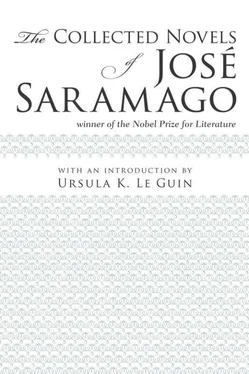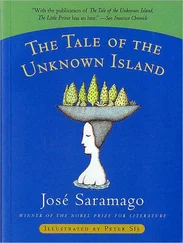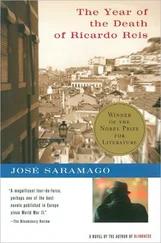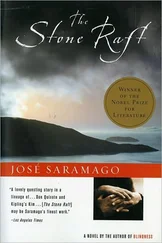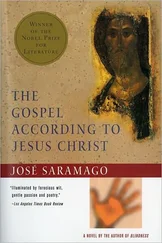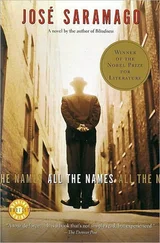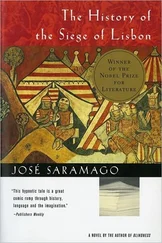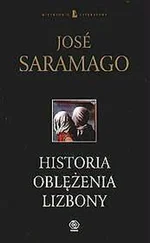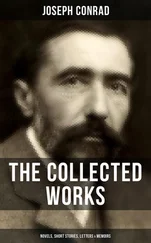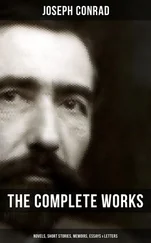It has stopped raining, the sky has cleared, and Ricardo Reis can take a stroll before lunch without any risk of getting soaked. He decides to avoid the lower part of the city because the flood has still not subsided completely in the Cais do Sodré, its paving stones covered with fetid mud which the current of the river has lifted from deep and viscous layers of silt. If this weather persists, the men from the cleaning department will come out with their hoses. The water has polluted, the water will clean, blessed be the water. Ricardo Reis walks up the Rua do Alecrim, and no sooner has he left the hotel than he is stopped in his tracks by a relic of another age, perhaps a Corinthian capital, a votive altar, or funereal headstone, what an idea. Such things, if they still exist in Lisbon, are hidden under the soil that was moved when the ground was leveled, or by other natural causes. This is only a rectangular slab of stone embedded in a low wall facing the Rua Nova do Carvalho and bearing the following inscription in ornamental lettering, Eye Clinic and Surgery , and somewhat more austerely, Founded by A. Mascaró in 1870. Stones have a long life. We do not witness their birth, nor will we see their death. So many years have passed over this stone, so many more have yet to pass, Mascaró died and his clinic was closed down, perhaps descendants of the founder can still be traced, they pursuing other professions, ignoring or unaware that their family emblem is on display in this public place. If only families were not so fickle, then this one would gather here to honor the memory of their ancestor, the healer of eyes and other disorders. Truly it is not enough to engrave a name on a stone. The stone remains, gentlemen, safe and sound, but the name, unless people come to read it every day, fades, is forgotten, ceases to exist. These contradictions walk through the mind of Ricardo Reis as he walks up the Rua do Alecrim, where tiny rivulets of water still course along the tram tracks. The world cannot be still, the wind is blowing, the clouds soaring, don’t let us talk about the rain, there has been so much of it. Ricardo Reis stops before a statue of Eça de Queirós, or Queiroz, out of respect for the orthography used by the owner of that name, so many different styles of writing, and the name is the least of it, what is surprising is that these two, one called Reis, the other Eça, should speak the same language. Perhaps it is the language that chooses the writers it needs, making use of them so that each might express a tiny part of what it is. Once language has said all it has to say and falls silent, I wonder how we will go on living. Problems already begin to appear, perhaps they are not problems as yet, rather different layers of meaning, displaced sediments, new questioning formulations, take for example the phrase, Over the great nakedness of truth, the diaphanous cloak of imagination. It seems clear, compact, and conclusive, a child would be able to understand and repeat it in an examination without making any mistakes, but the same child might recite with equal conviction a different phrase, Over the great nakedness of imagination, the diaphanous cloak of truth , which certainly gives one more to ponder, more to visualize with pleasure, the imagination solid and naked, the truth a gauzy covering. If our maxims are reversed and become laws, what world will be created by them. It is a miracle that men do not lose their sanity each time they open their mouths to speak. The stroll is instructive, a moment ago we were contemplating Eça, now we can observe Camoes. They forgot to put any verses on his pedestal. Had they done so, what would they have put, Here with deep sorrow, with mournful song. Better to leave the poor, tormented creature and climb what remains of the street, the Rua da Misericórdia formerly the Rua do Mundo, unfortunately one cannot have it both ways, it has to be either Mundo or Misericórdia. Here is the old Largo de Sao Roque, and the church dedicated to that saint, whose festering wounds caused by plague were licked by a dog. The plague was almost certainly bubonic, the animal hardly of the same breed as the bitch Ugolina that knows only how to tear and devour. Inside this famous church you will find the chapel of Sao João Baptista, its decorations entrusted to Italian artists by Dom João V, king, mason, and architect par excellence, who won such renown during his reign. Take a look at the convent of Mafra and also the aqueduct of Águas Livres, of which the full history has yet to be written. Here too, on the diagonal of the two kiosks that sell tobacco, lottery tickets, and spirits, stands the monument in marble erected by the Italian colony to commemorate the marriage of King Dom Luis, the translator of Shakespeare, and Dona Maria Pia di Savōia, the daughter of Verdi, that is to say, of Vittorio Emmanuele, King of Italy, the only monument in the entire city of Lisbon which resembles a chastising rod or carpet beater with its five eyelets. At least that is what it suggests to the little girls from the orphanages, with their startled eyes, or if blind, they are so informed by their seeing companions, who from time to time pass this way dressed in little smocks and walking in formation, getting rid of the stench of the dormitory, their hands still smarting from the latest caning. This is a traditional neighborhood, exalted in name and location, but low in its way of life, for the laurel branches on the doors of the taverns alternate with women of easy virtue, al though, because it is still morning and the roads have been washed by the recent rain, you can sense a freshness, an innocence in the air, an almost virginal breeze. Who would have thought this possible in such a disreputable place, but the canaries affirm it with their song, their cages hanging out on the balconies or at the entrances to the taverns, they warble as if demented. One has to take advantage of the fine weather, especially when it is not expected to last, for once the rain starts up again their singing will die away, their feathers will ruffle. One little bird, more prescient than the others, buries its head under its wing and pretends to be asleep, its mistress is coming to fetch it indoors, and now only rain can be heard, also the strumming of a guitar nearby, where it is coming from Ricardo Reis cannot tell. He has taken shelter in this doorway at the beginning of the Travessa da Agua da Flor. It’s often said that the sun is here then gone again, the clouds that let it through cover it quickly, but showers, too, come and go, the rain pours down, passes, the eaves and verandahs trickle water, the wash on the clotheslines is dripping, then a cloudburst so sudden there is no time for the women to do anything, to shout, as is their wont, It’s raiiiiining, passing the word from one to another like soldiers in their sentry boxes at night. But the canary’s mistress is on the alert and manages, in the nick of time, to retrieve it. Just as well that its frail little body has been protected, see how its heart is beating, Jesus, such violence, such speed. Was it the fright, no, it is always like this, a heart that lives for a short time beats fast, in compensation. Ricardo Reis crosses the park to take a look at the city, the castle with its walls in ruins, the terraced houses collapsing along the slopes, the whitish sun beating on the wet rooftops. Silence descends on the city, every sound is muffled, Lisbon seems made of absorbent cotton, soaked, dripping. Below, on a platform, are several busts of gallant patriots, some box shrubs, a few Roman heads out of place, so remote from the skies of Latium, as if one of Rafael Bordalo Pinheiro’s native rustics had been set up to make a rude gesture to the Apollo Belvedere. The entire terrace is a belvedere as we contemplate Apollo, then a voice joins the guitar and they sing a fado. The rain appears to have finally disappeared.
Читать дальше
